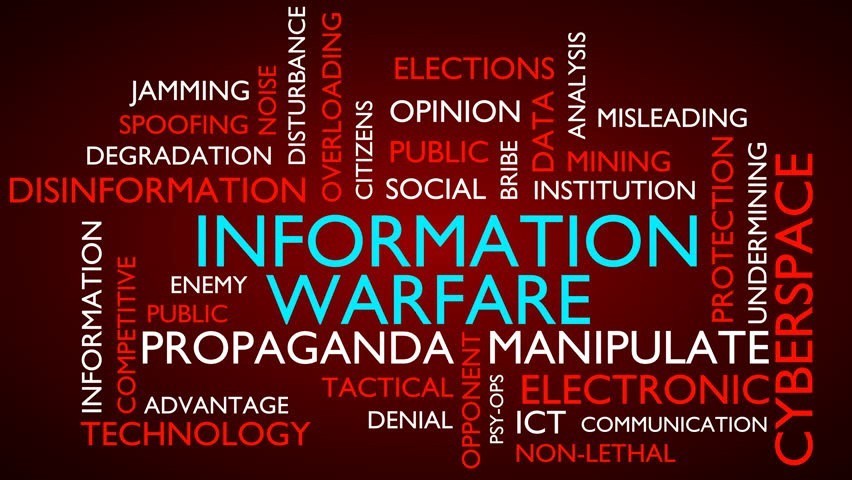The notion of fifth-generation warfare originated in 2009 by American analyst and former Senior Advisor to the President David Axe in Wired magazine. This revolutionary idea transformed the perspective of strategy and conflict in the contemporary era. This article examines into the complexity of fifth-generation warfare, examining its inception, distinguishing traits, and consequences for contemporary geopolitical environments. Along with that we explore the intricacies of this dynamic paradigm and strive to understand its relevance in a world that is constantly changing.
What is the 5th Generation War?
Abbot in his “Handbook of 5GW”, 2010, states that “The very nature of Fifth Generation Warfare is that it is difficult to define.” He also adds that 5GW is a war of “information and perception”.[1] In the twenty-first century, the struggle for a sustainable world and the prospects of world peace are severely jeopardized by the most destructive phase; fifth-generation warfare so far. Countries are pledged in “information and perception warfare”. During this time, nations are engaged in conflicts with one another over trade, finances, economics, technology, and energy. As military historian Martin van Creveld states in his book “On Future War” 5GW will blur the lines between war and peace, making it harder to identify aggressors and victims.[2] It is also important to take into account that fifth-generation warfare frequently operates in “grey zones” that lie just below the threshold of proclaimed war, obfuscating the distinction between war and peace. Furthermore, fifth-generation warfare techniques are frequently used with conventional military action to create a hybrid warfare strategy.[3] For instance, the Myanmar Junta’s repression of dissent involves shutting down the internet, limiting access to particular platforms, and using cyberattacks to target opposition figures, journalists, and activists. The Junta also faces economic isolation and international sanctions, which it tries to fend off by manipulating its own resources and taking advantage of other trading partners.[4]
Pakistan’s security paradigm has been significantly impacted by the emergence of fifth generation warfare, which brings new threats and challenges that call for a thorough grasp of its essential elements, concrete instances, and consequences for national security. In order to address new security challenges, this article will examine how Pakistan’s security and response are affected by fifth generation warfare, emphasizing the necessity of increased resilience and international cooperation.
Historical Context of Warfare in Pakistan
Since its inception in 1947, Pakistan has seen numerous security issues and conflicts throughout history. Its primary security concerns stem from regional tensions, especially those with India, which have resulted in three Indo-Pakistani wars and current conflicts over the Kashmir area. In addition, Pakistan’s stability has faced serious threats from internal conflict, including bloodshed between ethnic groups and divisions. Insurgencies and terrorism have also plagued the nation, especially in the tribal areas that border Afghanistan and serve as havens for extremist organisations like the Taliban and Al-Qaeda.[5] Pakistan also has complicated connections with regional and international powers as a result of its strategic location in South Asia, which has made it a major role in global geopolitics.
Pakistan’s historical conflicts of warfare have given rise to 5th Generation Warfare (5GW) by the use of contemporary tactics and methods. Technological developments, improved communication, and the evolving character of international conflicts have all contributed to this evolution. Modern weaponry and communication techniques have been incorporated into Pakistan’s military operations over time. Conventional strategies are still in use, but asymmetric warfare—which uses guerilla tactics, targeted strikes, and proxy groups—has grown in popularity. This change blurs the distinctions between war and peace in the region and is a reflection of the difficulties in combating non-state actors as well as the growing power of social engineering and information manipulation. However, Pakistan’s critical infrastructure, national security, and sociopolitical stability are seriously threatened by the growing prevalence of cyberwarfare, information manipulation, and hybrid tactics. Furthermore, adversaries frequently use 5GW strategies to take advantage of Pakistan’s own fault lines, escalating political, ethnic, and sectarian tensions. Furthermore, the employment of propaganda and disinformation campaigns on social media platforms has the power to sway public opinion and erode confidence in institutions and the government. Pakistan must therefore strengthen its defences against 5GW threats by implementing extensive cybersecurity measures, forceful counter-propaganda tactics, and proactive engagements.
Key Components of 5th Generation Warfare
The key components of Fifth Generation warfare have changed in response to the difficulties posed by contemporary conflict, such as the high cost of conventional warfare and the problems caused by the spread of nuclear weapons. In the region, the application of contemporary tactics and strategies like cyberwarfare, information warfare, and hybrid warfare has increasingly prevalent. These strategies seek to impede and neutralize the enemy’s activities without depending on traditional military tactics.
- Cyber Warfare
The use of digital technology to disrupt, damage, or destroy computer networks, systems or data is known as cyberwarfare. It involves attacks against computer systems, networks, and information infrastructure; the objective is to destroy or obtain unauthorized access to data or systems for tactical advantage. Cyber espionage by foreign intelligence agencies, hacking of official and military websites, and cyberattacks on vital infrastructure, including power grids and financial systems, are just a few of the many cyber threats and attacks that Pakistan has had to deal with. For example, in 2011 Indian gangs were hacking websites belonging to the military and government. A ransomware assault known as WannaCry occurred in 2013, disrupting vital infrastructure. APT29 is deploying malware against defense organizations in Pakistan in 2021.[6]
- Information Warfare
Information warfare is the art of controlling perception and information to sway public opinion, erode confidence, and further strategic goals. It includes a range of strategies like disinformation campaigns, psychological operations, and propaganda that are meant to sway public opinion and accomplish tactical goals. Information warfare has been employed by anti-state actors in Pakistan to disseminate false narratives and rift society. This has been further aided by social media, where misinformation campaigns and fake news are used to skew public opinion and spread instability. Information warfare’s effects on public opinion can have a big impact on national security and stability.[7]
- Hybrid Warfare
In order to accomplish strategic goals, hybrid warfare combines conventional military tactics with unconventional strategies including cyberattacks, information warfare, and proxy wars. Hybrid warfare in Pakistan has included assistance for non-state actors like terrorist organizations and proxy wars. These strategies seek to undermine national unity and destabilize the nation. Pakistan may find it difficult to effectively resist these threats because of the difficulties presented by hybrid warfare’s unusual tactics and techniques.[8]
Case Studies of 5th Generation Warfare in Pakistan
There are many specific examples of generation warfare that demonstrate the complex nature of modern warfare, where cyber-attacks, information manipulation, and hybrid tactics are used to disrupt, disable, and destabilize adversaries without relying solely on conventional military methods.
The cyber-attack on the Pakistan Stock Exchange (PSX) in June 2020 is a prominent example of cyber warfare targeting Pakistani institutions. The attack, which was thought to have been planned by foreign parties, hampered trade and exposed weaknesses in important financial infrastructure. The PSX cyberattack highlights how dangerous cyber warfare is becoming for Pakistan’s national security and economic stability. It illustrates how financial institutions could be impacted by cyberattacks and the necessity of stronger cybersecurity defenses to protect vital infrastructure.[9]
Next, we have another case study where the tactic of information warfare is employed. One such instance of information warfare is the use of propaganda and disinformation efforts against Pakistan by hostile state and non-state actors. These campaigns seek to foment division, sway public opinion, and erode confidence in governmental institutions. Information warfare techniques have been used to incite violence, inflame sectarian tensions, and undermine the legitimacy of the Pakistani government. These tactics include the spread of false narratives using traditional and social media platforms. The stability and cohesion of Pakistan are seriously threatened by these measures.[10] Hybrid warfare strategies are used in the region, as evidenced by the deployment of proxy players and backing for non-state actors by neighboring countries, especially in the context of the Kashmir dispute. Outside parties give insurgent organizations operating in Pakistan-administered Kashmir and other border regions financial and intellectual support. Pakistan’s security and sovereignty are threatened by hybrid warfare strategies, such as backing for non-state actors and proxy wars. They make it more difficult to resolve regional disputes peacefully and raise the possibility that hostilities may escalate into traditional armed combat.[11]
Implications and Future Prospects
5th Generation Warfare (5GW) poses significant challenges to Pakistan’s security, with adversaries using tactics like cyberattacks, information manipulation, and hybrid warfare to target the country’s critical infrastructure, national cohesion, and public perception.
Increased vulnerability, which presents serious difficulties to Pakistan’s security because of the ever-evolving nature of threats like cyberattacks, information warfare, and hybrid tactics, is one of the ramifications of 5GW for Pakistan. These strategies target vital infrastructure, erode public confidence, and intensify internal strife. Complexity of Attribution; Due to the vagueness of 5GW techniques, attribution is challenging, which complicates response operations and calls for increased intelligence capabilities as well as international cooperation. Adaptive techniques are required; in order to effectively counter 5GW threats, Pakistan must integrate cybersecurity measures, counterpropaganda campaigns, and traditional military tactics.[12]
Advances in cyber capabilities, a rise in the use of automation and artificial intelligence in combat, and the spread of disinformation campaigns and hybrid tactics are anticipated to be future trends in 5GW. Pakistan’s security environment may face additional difficulties as a result of these trends. In order to effectively fight new threats, Pakistan must foresee and prepare for these trends by making investments in cybersecurity infrastructure, expanding its intelligence capabilities, and fortifying its foreign partnerships.
To defend sensitive data and vital infrastructure from cyberattacks, Pakistan should invest in a strong cybersecurity infrastructure. Additionally, it ought to improve their capacity to get, examine, and utilise data pertaining to 5GW risks. In order to effectively address 5GW threats, Pakistan should work with regional and international partners to coordinate response activities, exchange information, and establish cooperative solutions.[13]
Conclusion
In a nutshell the advent of Fifth Generation Warfare (5GW) has drastically changed the character of contemporary conflict and presented Pakistan with hitherto unseen difficulties and intricacies in its security framework. As this analysis has shown, 5GW includes a variety of tactics, including as information manipulation, cyberwarfare, and hybrid strategies, all of which seriously jeopardise Pakistan’s vital infrastructure, unity within the country, and public image. These strategies muddy the lines between conflict and peace, making it difficult to assign blame and complicating response operations. In order to effectively tackle the increasing dangers of 5GW, Pakistan will need to employ adaptive plans that include counter-propaganda efforts, cybersecurity measures, and conventional military operations going forward. Furthermore, Pakistan must anticipate future trends in 5GW, including as the development of cyber capabilities and the spread of disinformation campaigns, in order to sufficiently prepare and strengthen its defences.
In the end, a multifaceted strategy comprising investments in cybersecurity infrastructure, intelligence capabilities, and international cooperation is needed to effectively respond to 5GW threats. In an increasingly complex and dynamic geopolitical context, Pakistan can protect its national security and reduce the risks associated with 5GW by bolstering its resilience and forming cooperative alliances.
[1] Group, The Radio Research. 2022. “An Introduction to Fifth Generation Warfare.” Grey Dynamics. March 31, 2022. https://greydynamics.com/an-introduction-to-fifth-generation-warfare/.
[2] Krishnan, Armin. 2022. “Fifth Generation Warfare, Hybrid Warfare, and Gray Zone Conflict: A Comparison.” Journal of Strategic Security 15 (4): 14–31. https://doi.org/10.5038/1944-0472.15.4.2013.
[3] Butt, Ahsan I. n.d. “Has a ‘Fifth Generation War’ Started between India and Pakistan?” Www.aljazeera.com. https://www.aljazeera.com/opinions/2021/1/4/are-india-and-pakistan-in-a-fifth-generation-war.
[4] Than, Tin Maung Maung. 2004. “The Essential Tension: Democratization and the Unitary State in Myanmar (Burma).” South East Asia Research 12 (2): 187–212. https://www.jstor.org/stable/23750296.
[5] Cheema, Pervaiz. n.d. “Security Threats Confronting Pakistan.” https://www.nids.mod.go.jp/english/publication/joint_research/series9/pdf/10.pdf.
[6] Maseehullah, Anjum Bibi, and Humaira Meer. 2023. “Fifth Generation War against Pakistan Its Dynamics, Implications and Response by State Institutions.” Review of Education, Administration & Law 6 (1): 41–50. https://doi.org/10.47067/real.v6i1.302.
[7] Maseehullah, Anjum Bibi, and Humaira Meer. 2023. “Fifth Generation War against Pakistan Its Dynamics, Implications and Response by State Institutions.” Review of Education, Administration & Law 6 (1): 41–50. https://doi.org/10.47067/real.v6i1.302.
[8] Maseehullah, Anjum Bibi, and Humaira Meer. 2023. “Fifth Generation War against Pakistan Its Dynamics, Implications and Response by State Institutions.” Review of Education, Administration & Law 6 (1): 41–50. https://doi.org/10.47067/real.v6i1.302.
[9] Kundi, Dr Ghulam Muhammad. 2008. “Digital Pakistan: Opportunities & Challenges.” JISTEM Journal of Information Systems and Technology Management, January. https://www.academia.edu/54106601/Digital_Pakistan_Opportunities_and_Challenges.
[10] Yamin, Tughral. n.d. “HYBRID WARFARE -CHALLENGES for PAKISTAN.” https://strategicthought.ndu.edu.pk/site/article/download/54/44/54.
[11] Naz, Dr Farah, and Dr Zia ul Haque Shamsi. 2022. “Hybrid Warfare and Its Nuances: A Case-Study from South Asia.” IPRI Journal 22 (01): 25–43. https://doi.org/10.31945/iprij.220102.
[12] Riaz, Muhammad. 2019. “Cyber Threat Landscape and Readiness Challenge of Pakistan.” https://www.issi.org.pk/wp-content/uploads/2019/04/1-SS_Muhammad_Riaz_Shad_No-1_2019.pdf.
[13] Ahmad, Sara. 2022. “CYBER SECURITY THREAT and PAKISTAN’S PREPAREDNESS: AN ANALYSIS of NATIONAL CYBER SECURITY POLICY 2021.” Pakistan Journal of Humanities & Social Sciences Research, no. 05. https://scholar.archive.org/work/jhon3i7finb47kipbaq7lrdqde/access/wayback/https://journals.wumardan.edu.pk/view_paper.php?paper_id=296.

Table of Contents
ToggleMahnoor Amin
Mahnoor Amin is a student of defense and strategic studies at Quaid-e-Azam University, Islamabad.













